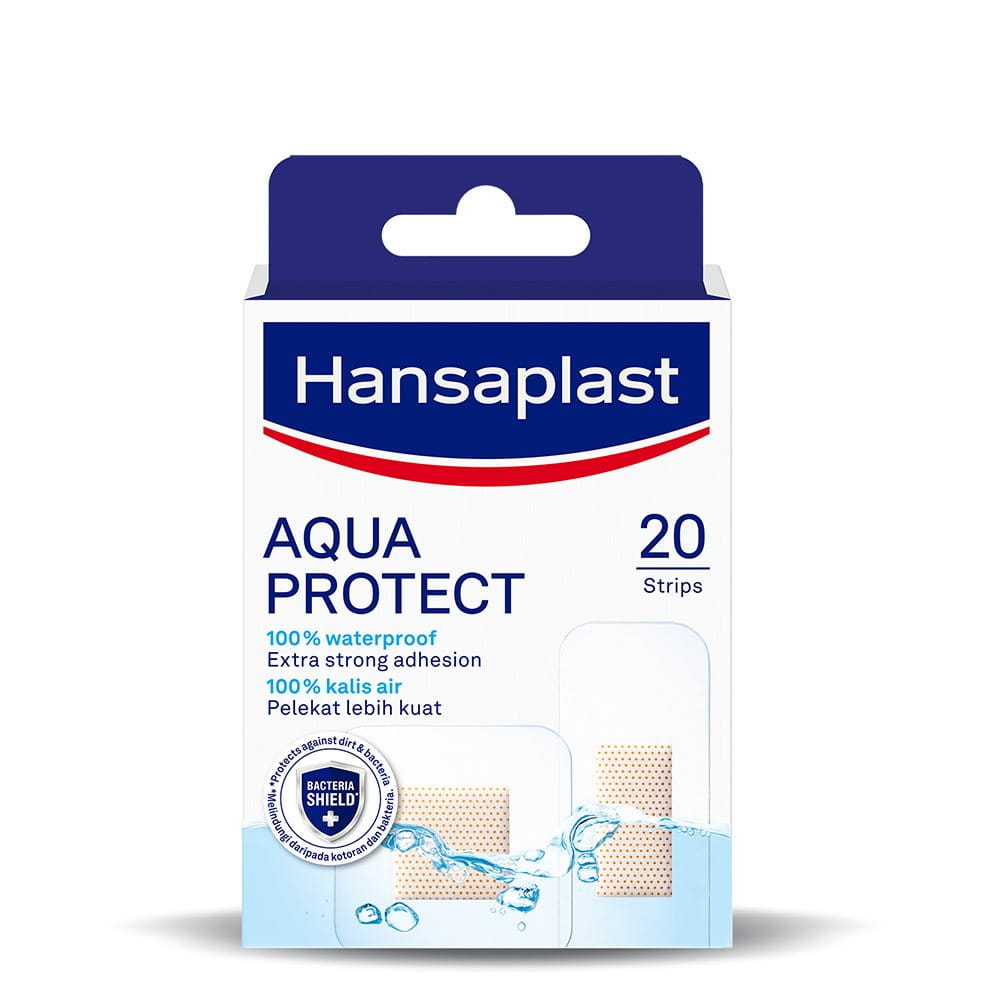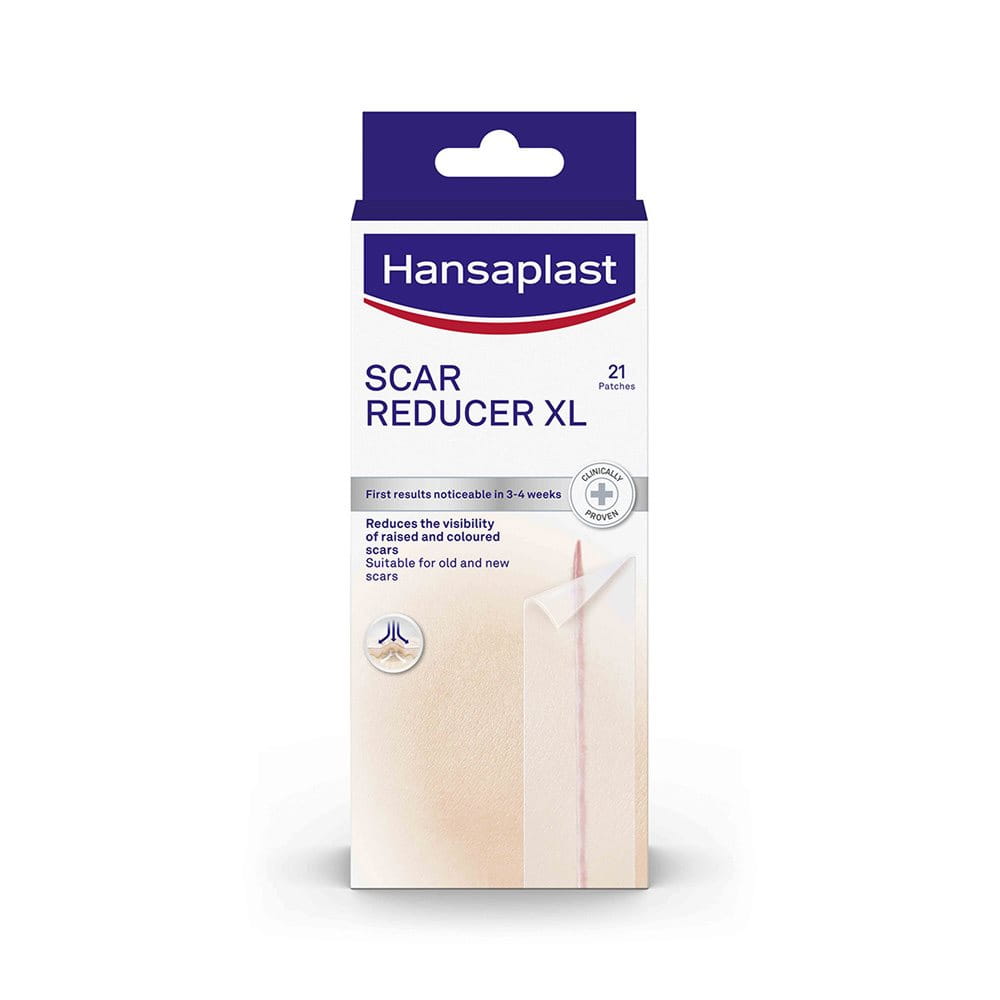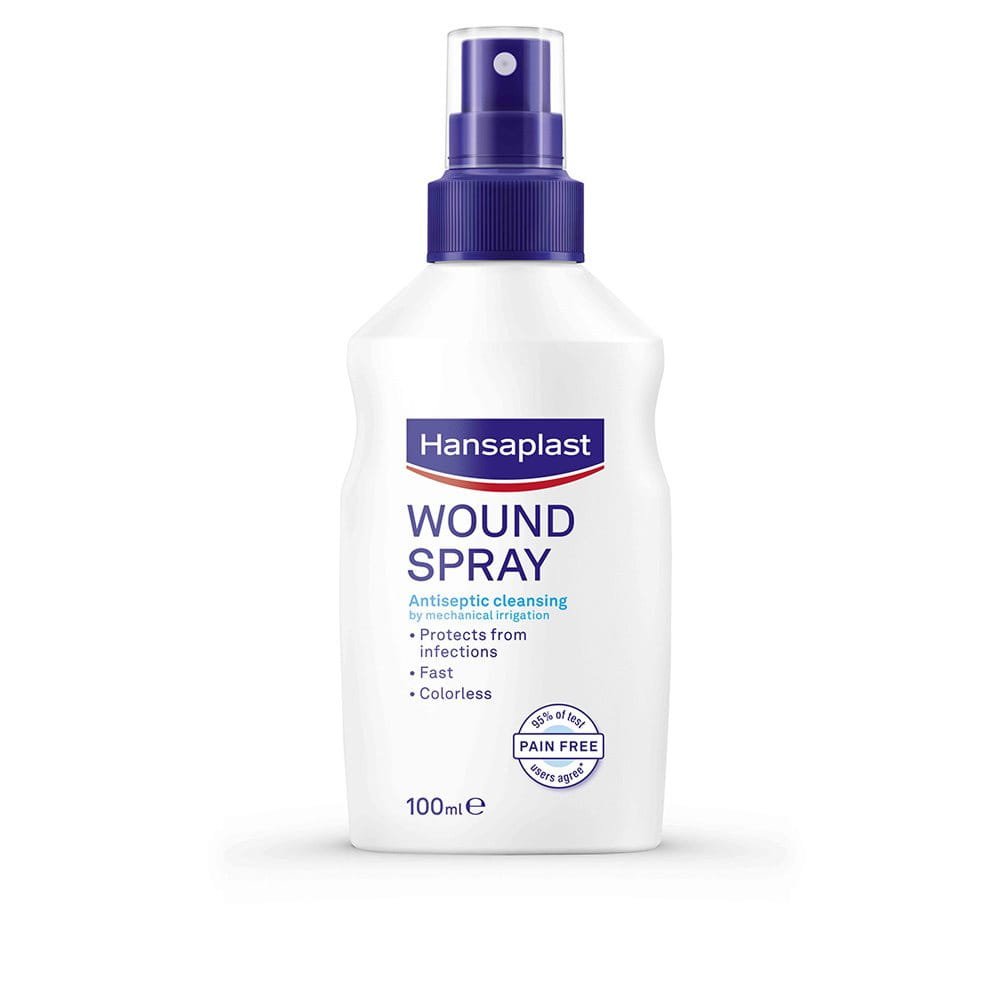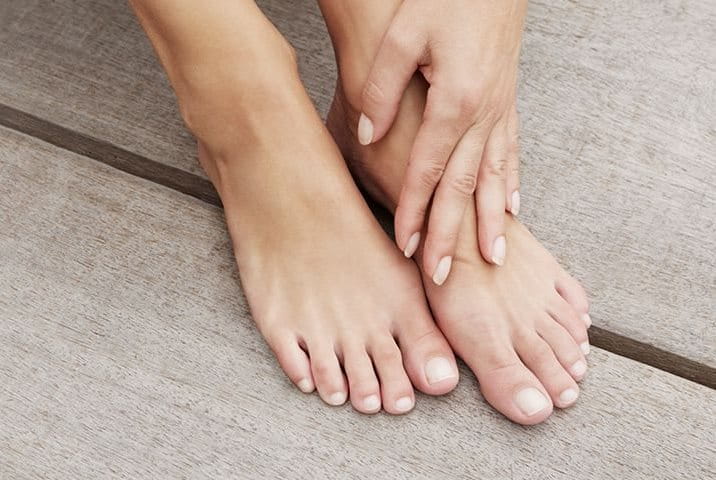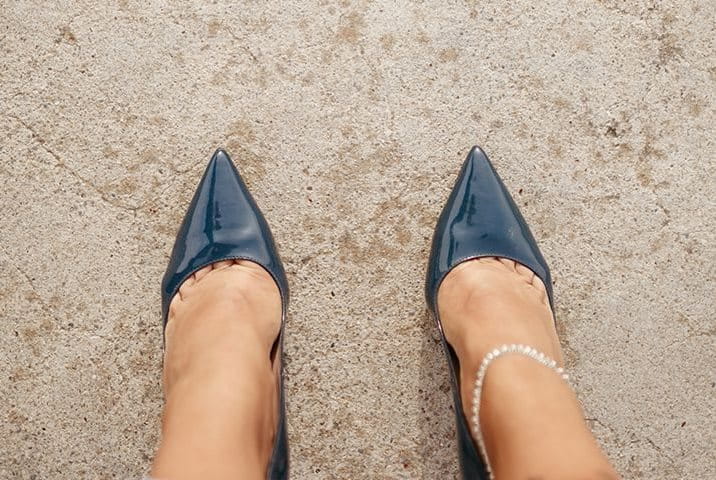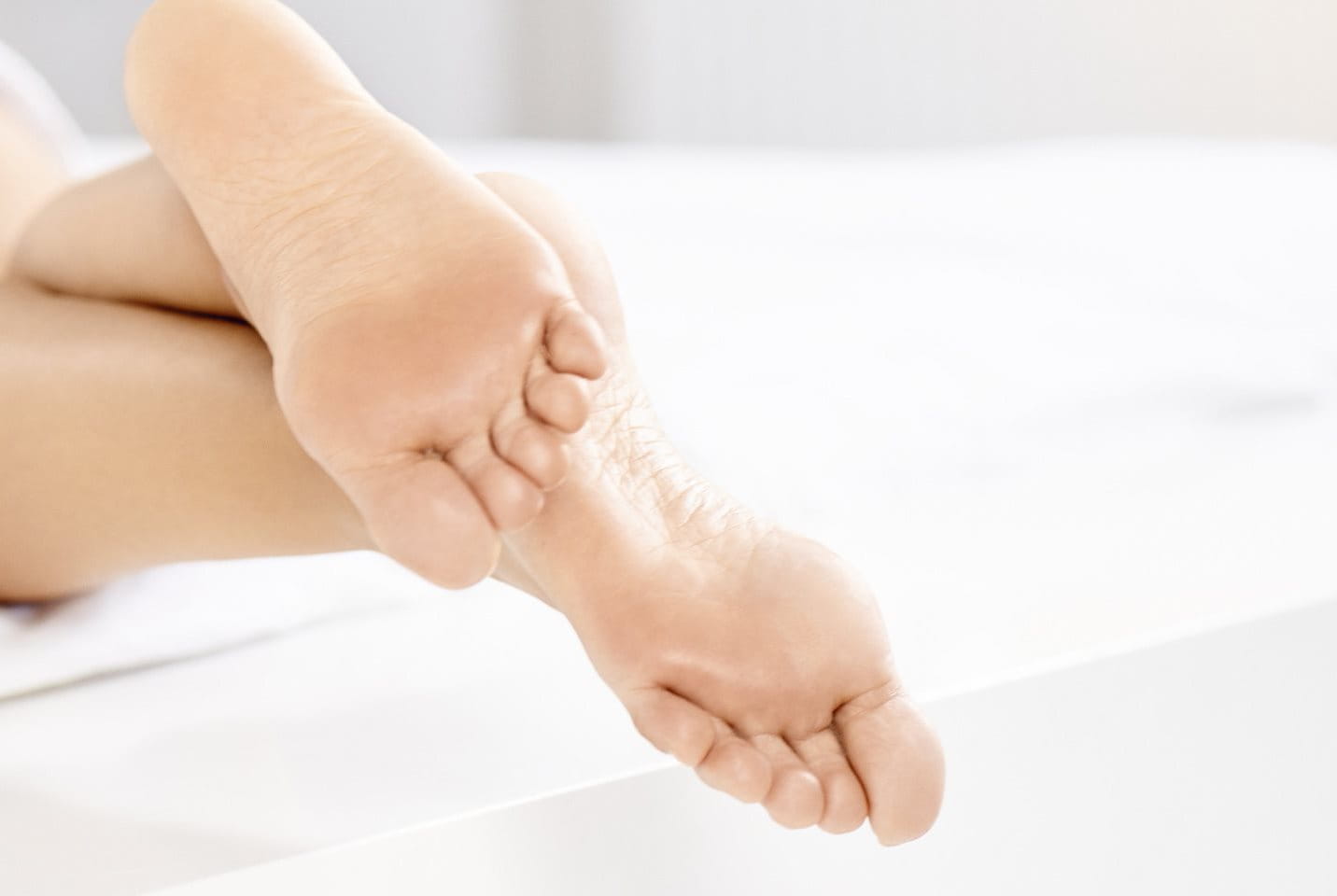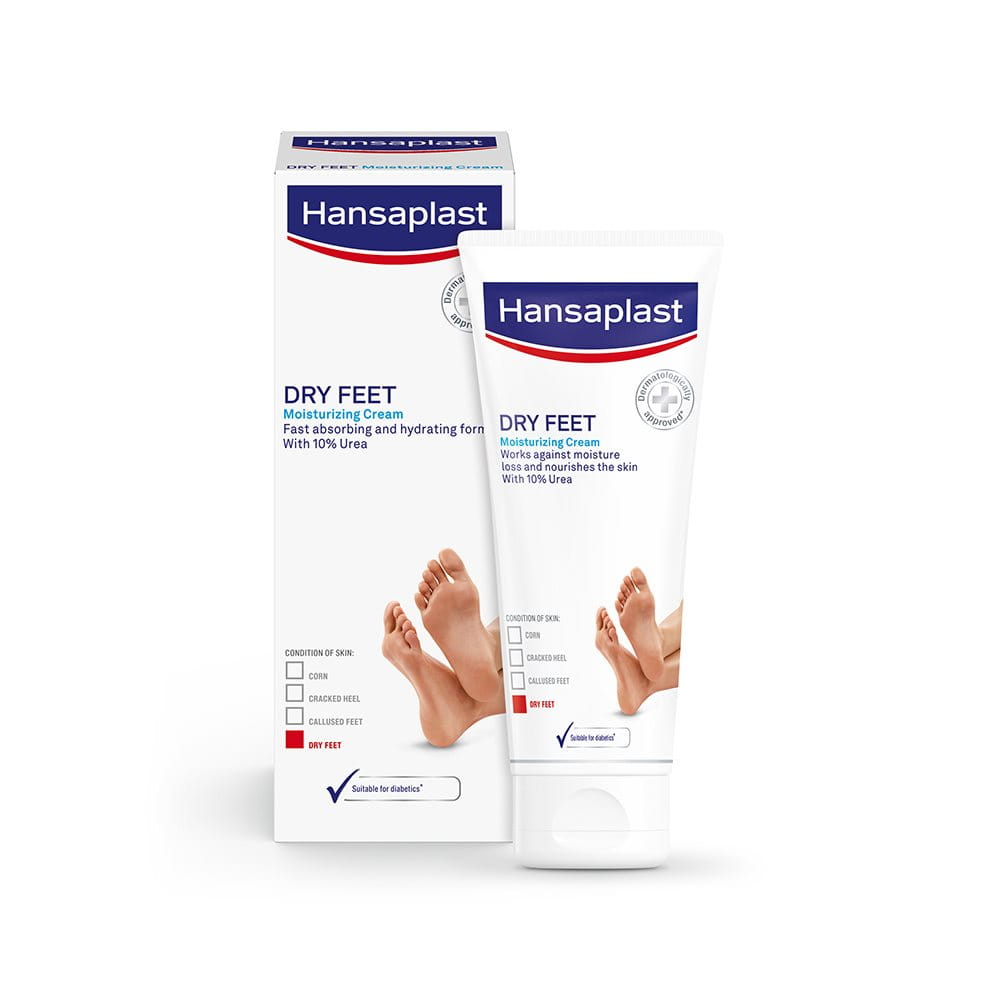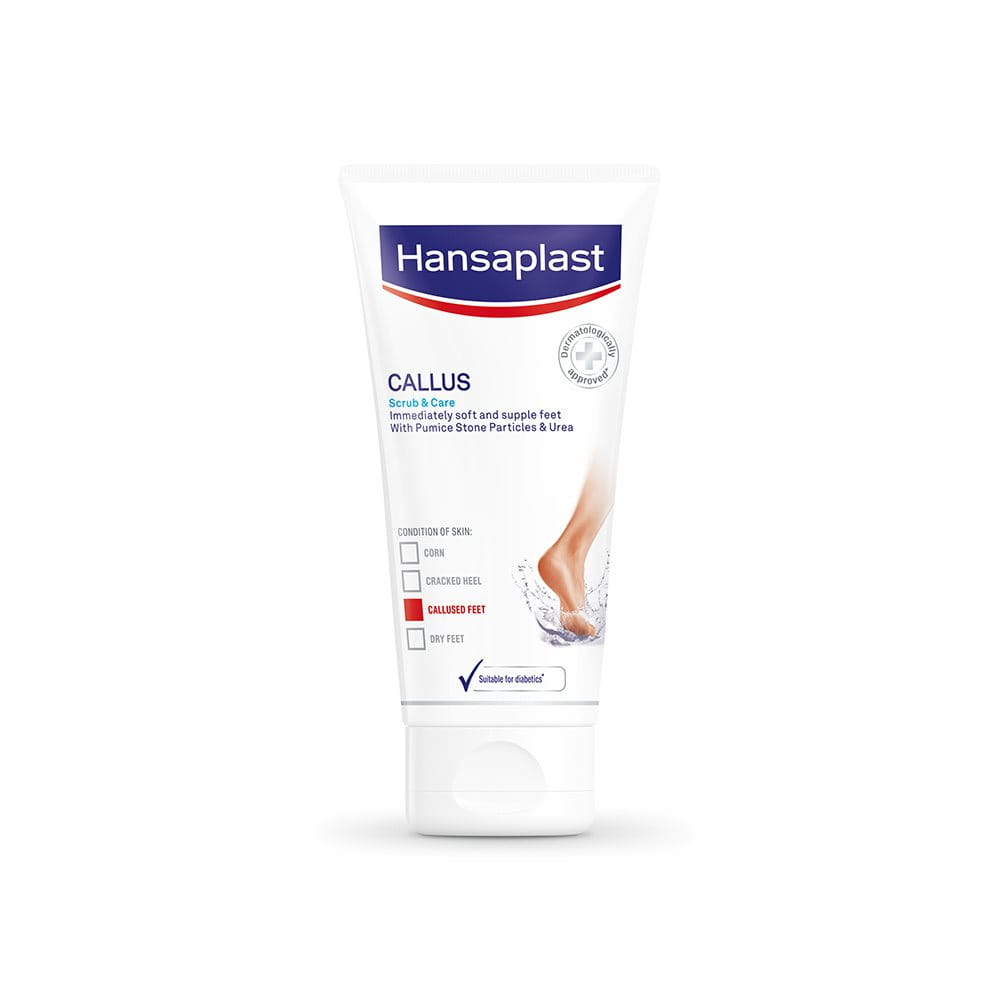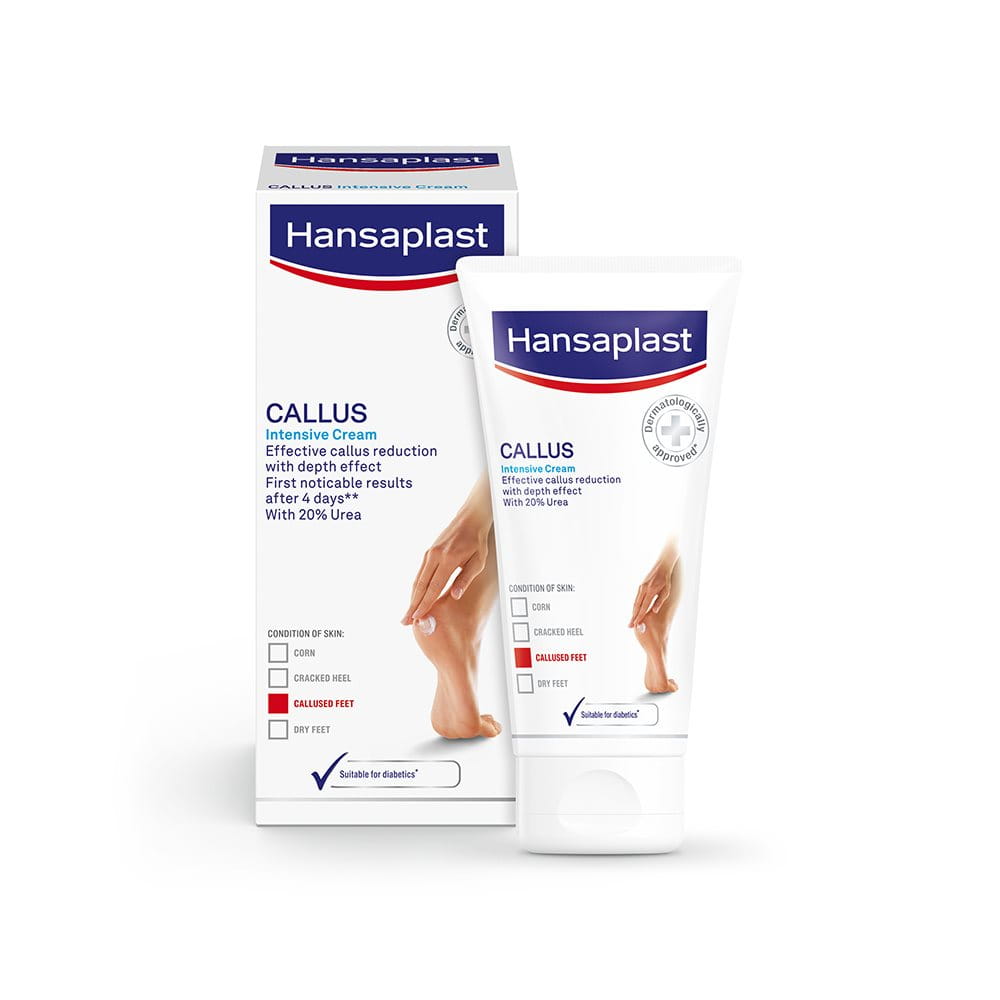
- Hardened calloused skin (27%)
- Dry skin (25%)
- Sweaty feet (20%)
- Blisters (15%)
- Corns (15%)
Our foot care expert Dr Maike Kuhlmann explains the causes behind these common problems and gives us practical tips on how to keep feet healthy.
Dry skin on feet
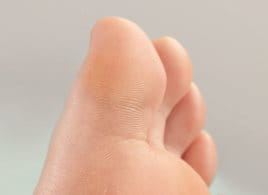

“Dry skin may not be the most frequently mentioned problem when it comes to feet, but it’s where the most common foot problems start or originate from,” says Dr Kuhlmann. She explains, “The skin needs a certain amount of moisture to remain supple and to withstand pressure and other external influences. That is why many foot problems such as callus, cracked heels, and corns arise – when skin loses its natural moisture and natural barrier function.”
This is a straight-forward problem to address.
Using a foot cream rich in urea increases the skin’s hydration by attracting and binding water.
Hansaplast Regenerating Foot Cream, for example, smoothes feet instantly. Its high-performance moisturizing formula with 10% urea rehydrates the skin, enhances its water-binding capacity and strengthens its protective function. The skin is soft and supple again. For best results, the foot cream should be applied twice a day. It’s recommended to avoid overly hot showers or baths, as this can dry out the skin.To learn more specifically about cracked heels or cracked skin elsewhere on the feet, you might be interested in this article.
Hardened, calloused skin
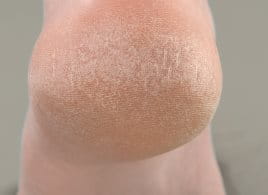

“A foot callus is basically an area of very dry, hard and thickened skin. It can form whenever the skin is exposed to pressure and friction over long periods of time. The areas where this tends to happen are the soles and heels of the feet - the parts of the feet we stand on.” Dr Kuhlmann points out, “If pressure and friction are maintained, elasticity decreases and fissures and skin cracks can occur. This is not only painful and unsightly, it can turn into a medical problem as well.”
The best way to get rid of a foot callus is with intense treatment.
For effective callus treatment, consider a foot-peeling product such as the Hansaplast Anti Callus 2in1 Peeling, which allows for gentle skin removal. Following the peeling, an intensive-formula foot cream such as the Hansaplast Anti Callus 20% UREA Intensive Cream should be applied. To prevent new callus formation, a good care routine is absolutely indispensable. If your problem is dry, cracked heels, you may find this article useful.
Sweaty feet
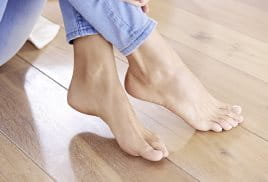

Good hygiene is the key to managing sweaty feet. A footbath with lukewarm water and soap is much better than a quick wash in the shower. Anyone who tends to sweat a lot should consider a footbath with herbs, such as sage.
A freshly scented foot spray can also help especially under hot and humid weather conditions.
There is more than one cure for sweaty feet. Depending on your personal needs, you can choose between different products. To prevent Athlete’s Foot and give your feet an extra fresh sensation all day long, a deodorant with Ocetenidine such as the Hansaplast Athlete’s Foot Protection 2 in 1 is the best choice. To prevent the feet from sweating in the first place, we recommend an antiperspirant such as Hansaplast Silver Active. It provides prolonged, safe protection against foot odour and sweat thanks to its active antibacterial complex with silver ions and aluminium salts.
Blisters
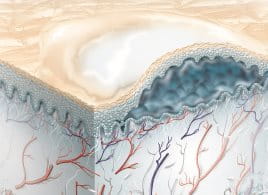

The new range of blister plasters from Hansaplast immediately relieves pain, and speeds up healing time, thanks to the Hydrocolloid Technology. This works on the principle of moist healing. Superabsorbers absorb blister fluid and allow a cushioning layer of gel to form over the wound, creating the ideal conditions for healing. This ‘cushion’ also prevents any further pressure or friction causing more pain - or damage.
This range of Hansaplast superior foot blister treatments has been created so that you’ll find the ideal plaster – regardless of the size or position of the blister on your foot.
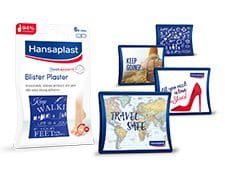
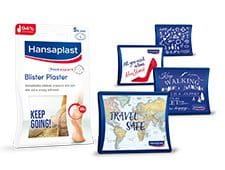
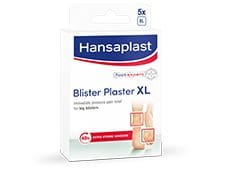


Foot Corns
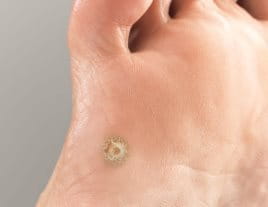

Corn removal is straightforward. Corns can be treated with special corn plasters such as the
Hansaplast Corn Plaster. Their soft, felt ring cushions the affected area, while the salicylic acid contained in it softens the corn for better removal. An extra-long strip prevents the plaster from slipping.
Medical advice
If you have questions, need advice or experience noticeable changes in the moisture level of your feet or other irregularities, you should speak to a trusted healthcare professional. Prevention is key – and regular care is important for prevention. Irregularities in foot moisture or other foot skin problems could be signs of diabetes or other conditions. If you would like to know why it is important for diabetics to take care of their feet, read our article “Why is foot care important for diabetics?”
*Omnibus study in Germany, Italy, Mexico with 1,000 participants per country. July 2013.
